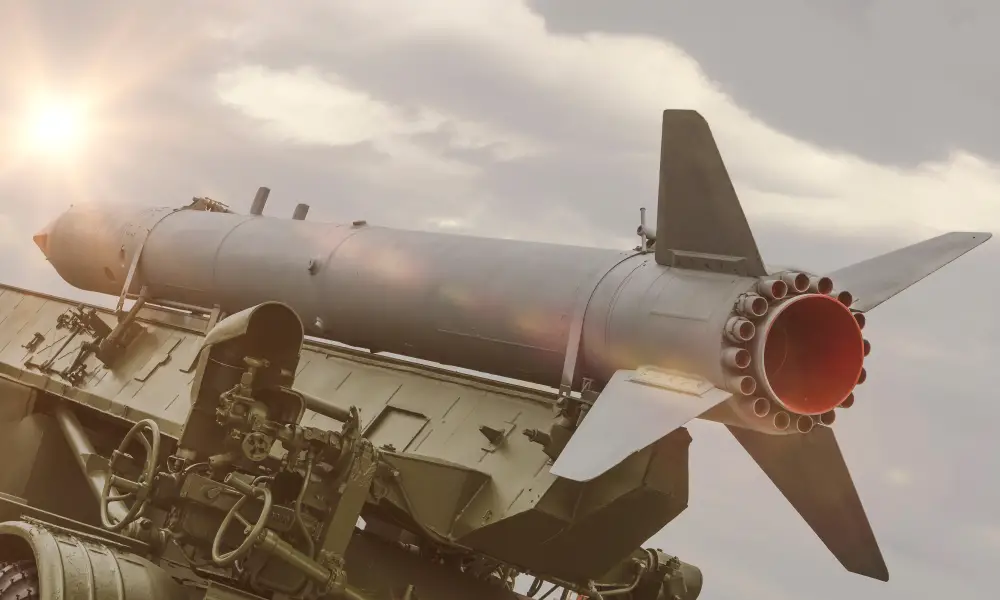News
Intel Director Warns of Cyber Attack ‘Now’ — Incidentally, It’s a Premise for US Nuclear Strike

Speaking to a meeting of the Senate Intelligence Committee Tuesday, Director of National Intelligence Daniel Coats detailed the latest global threat assessment — primarily a short list comprising North Korea, Iran, China, and Russia — asserting each of the four has already begun “using cyber operations as a low-cost tool of statecraft.”
“In the next year, Russian intelligence and security services will continue to probe U.S. and allied critical infrastructures, as well as target the United States, NATO and allies for insights into U.S. policy,” the assessment warns. “The 2018 U.S. midterm elections are a potential target for Russian influence operations.”
In 2016, Coats told the Associated Press, Russia “stepped up their game with cyber” — an unelucidated comment Newsweek surmised pertained to the yearslong probe into Russian “interference” in the presidential election — adding the “United States is under attack — now.”
Indeed, prior to the 2016 presidential race, that powerful nations attempt to influence the elections of other powerful nations had been common and accepted knowledge among intelligence communities worldwide — the United States itself exposed in a full-court press in Russia, successfully acting to ensure victory for Boris Yeltsin mere decades ago — with data indicating further American meddling at least 81 times in foreign elections during a period spanning just fifty-four years, from 1946 through 2000.
“The risk of interstate conflict, including among great powers, is higher than at any time since the end of the Cold War,” Coats continued, cited by the AP.
“The most immediate threats of regional interstate conflict in the next year come from North Korea and from Saudi-Iranian use of proxies in their rivalry. At the same time, the threat of state and nonstate use of weapons of mass destruction will continue to grow.”
Coats rightly flags the burgeoning field of cyber-warfare as an area for heightened concern, particularly as American infrastructure — the aging power grid comes to mind — falls even further into disrepair. But, wading past the tired War on Terror rhetoric dimpling the report, this assessment appears cloaked in the anticipatory parlance needed to justify a first-strike undertaken preemptively in defense — a matter of grave import in light of markedly similar language found elsewhere recently: the revamping of the Nuclear Posture Review.
Described simply as the nation’s ‘attitude’ or ‘position’ on the use of nuclear weapons, the NPR had aligned with a worldwide push to reduce nuclear weapons stockpiles to — if this could be said about such weapons — relatively tenable quantities, in the interest of staving off complete atomic annihilation of the planet. An arguably awkward standoff ensued, in which major nuclear powers assumed the stance of reserving atomic bombs strictly for defense of the same, and a painstakingly slow reduction began. That is, until this year.
President Trump requested an assessment of the NPR with revisions appropriate for current threats, and the Pentagon delivered — reversing the defensive argument to one permitting nuclear warheads be deployed against non-nuclear imminent threats — including, imperative to today’s threat assessment from the Director of National Intelligence, those of a ‘cyber’ nature.
Notably singling out each of the four aforementioned adversaries as separate cyber threats, the Department of Defense revision states — and in multiple iterations of the same, throughout — there “now exists an unprecedented range and mix of threats, including major conventional, chemical, biological, nuclear, space, and cyber threats, and violent non-state actors. These elements have produced uncertainty and risk.”
As Lawfare elaborates, “While the document strives to maintain ‘some ambiguity regarding the precise circumstances that might lead to a U.S. nuclear response,’ it explicitly states that the United States could employ nuclear weapons in response to ‘significant non-nuclear strategic attacks.’ This includes but is not limited to ‘attacks on U.S., allied, or partner civilian population or infrastructure.’”
Contextually, with the assessment of threat from the DNI — as well as the bombastic if foolhardy posturing emanating from Washington and, variously, North Korea, Iran, China, or Russia — it appears the U.S. may have tightened its grip a hair’s breadth (or four) on the nuclear trigger.
To be clear, this isn’t to suggest the White House and Pentagon are chomping at the nuclear-weapons bit. Further, the four nations have indeed remained in headlines as dangers to national security for many months — this animosity and bellicosity isn’t exactly a nascent development.
However, truthful analysis of American involvement in multiple, sustained wars, like Iraq and Afghanistan, indicate blueprints frequently drawn well before the bombs start dropping — and all-too often are built upon outright lies.
It is, thus, a most palpable if unintentional irony, the inclusion of the impotent Bush-era term, “weapons of mass destruction” — perhaps the singular, vapid talking point stirring sufficient public support for the invasion of Iraq, despite its utter fabrication — in the threat assessment presented today.
Indeed, it may yet prove categorically haunting.
Image: ShutterStock/gerasimov_foto_174.
Typos, corrections and/or news tips? Email us at Contact@TheMindUnleashed.com
